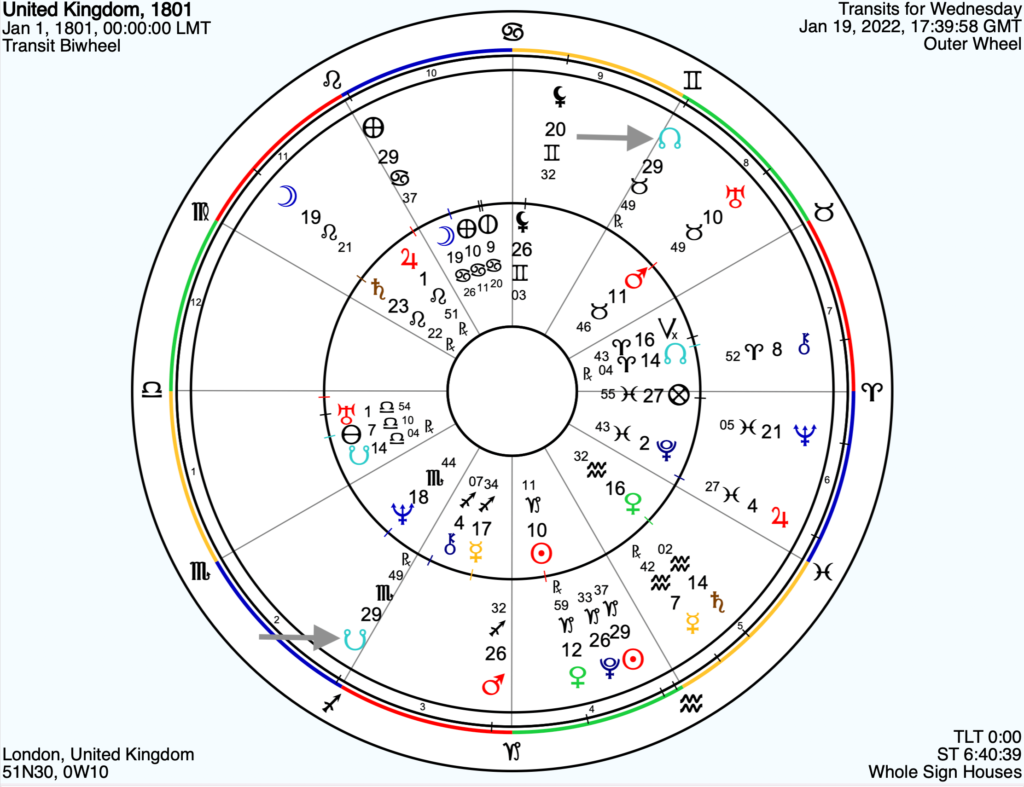
On 19 January 2022 we are in for a big shift as the Lunar Nodes leave behind SAGITTARIUS and GEMINI and enter TAURUS and SCORPIO.
The North and South Lunar Nodes, or Dragon’s Head and Tail, are invisible points in space – specifically the two points where the Moon’s orbital path crosses the ecliptic. These two Nodes spend 18 months at a time moving through the zodiac signs opposite each other on the ecliptic. Whichever zodiac signs they inhabit, they amplify the themes of those signs, and bring out new challenges and beginnings. Because the Nodes have long been associated with karmic workings and connections astrologers track their progress with interest, particularly when they change signs.
Sagittarius rules academic institutions and long distance travel; Gemini rules short distance travel and education. These have been some of the signature themes of pandemic. Back in May 2020 (when the Nodes moved into Sagittarius and Gemini) most of the world was in lockdown. From that point, overseas travel became far more onerous and expensive (and in some periods severely restricted during the 18 months that followed). Even short distance journeys became a hassle because of social distancing and mask wearing. In the UK, schools closed in March, and what was supposed to be a temporary closure then continued until September (with similar patterns in Europe and the US). And of course we have also seen the massive prominence of academic institutions (like Oxford University) and scientific learning in the development of vaccines.
So what will be in store now that the Nodes move to Taurus and Scorpio? Well the first thing we can expect is an easing of the pressure on the global travel industries. Travel, schooling, attending events and everyday commuting should now start to get easier.
Now the focus will shift onto to money and the food supply (ruled by Taurus), survival and debt (Scorpio themes). Expect the topics of conversation at the national level to shift to: paying off Covid-related debts, inflation, supply chains, the national minimal wage and how governments can support their citizens as energy and commodity prices rise. The driver behind this nodal energy is to get individuals and the collective to think with more precision about how we can best harness our agriculture, banks and intellectual assets to maximise our personal, and the collective, good.

